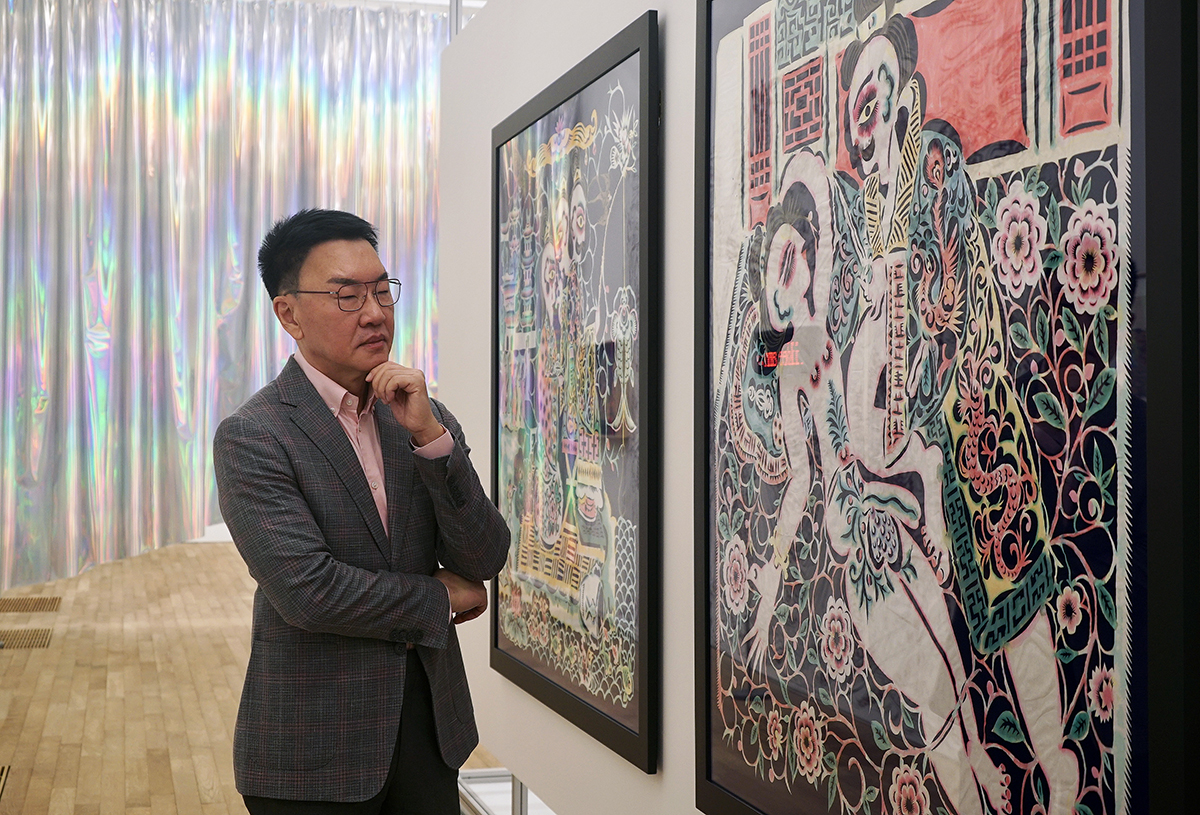
Patrick Sun at the exhibition “Myth Makers – Spectrosynthesis III”, JC Contemporary, Tai Kwun, Hong Kong
One of Asia’s bravest, most significant and most understated art philanthropists, Patrick Sun speaks to LUX about the challenges LGBTQ artists face in Asia, and who he is collecting
Patrick Sun has a light touch. When we bump into him at an art event in Singapore, he chats joshingly with some of the other collectors and exchanges thoughts on which parties to attend, or avoid. But his mission is anything but light.
A Hong Kong native, educated in Canada, Sun made his fortune in property development in his home territory, all the while turning his attention to philanthropy with a purpose. His Sunpride Foundation supports LGBTQ artists and art in a region where they have traditionally been sidelined or suppressed.
Follow LUX on Instagram: luxthemagazine
Sunpride has supported and co-hosted a series of shows entitled “Spectrosynthesis”, which started as the first LGBTQ themed exhibition staged in an art museum in Asia. Sun collects art from Asian artists with an aim to support LGBTQ creators. Beneath the light touch is a serious purpose, and an awareness of the suffering many LGBTQ artists face, particularly in more conservative Asian cultures.
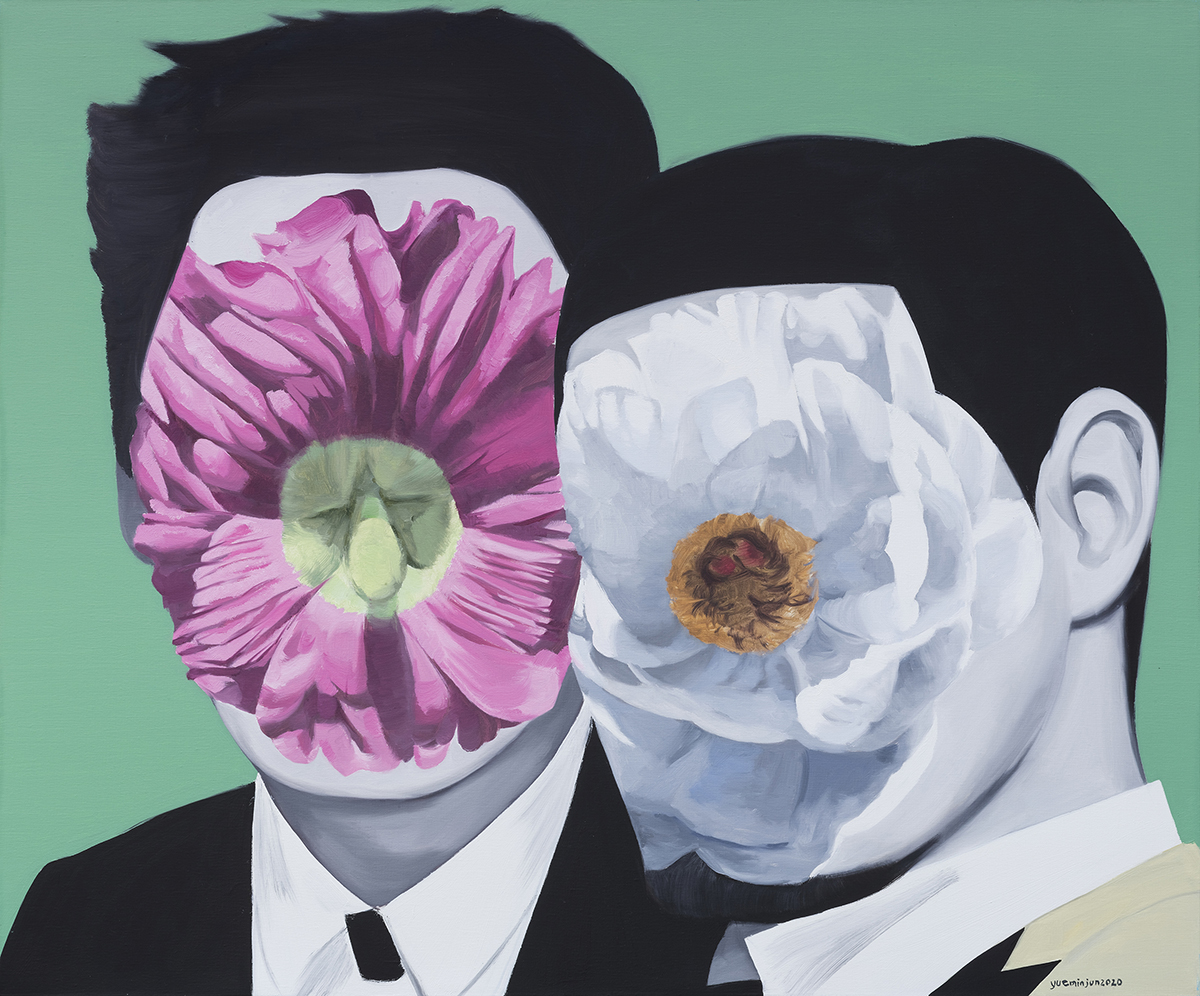
Hollyhock and Pure Daisies, 2020, by Yue Minjun
Sun chatted with us after our meeting in Singapore. He has raised a great deal of awareness in a short space of time, but there is a long way to go in a continent where homosexuality is illegal in several countries, and has a cultural stigma in others.
LUX: What recent acquisitions are you most excited by, and why?
Patrick Sun: I can think of two that are each significant in their own way. First, Yue Minjun’s Hollyhock and Pure Daisies: a portrait of gay icon Leslie Cheung and his partner, which features two flowers that are not supposed to bloom in the same season, representing the love between a couple who are not “meant” to be together. Second is Visitors by Bhupen Khakhar. We have always wanted to collect Bhupen Khakhar‘s paintings, but since his retrospective at Tate Modern in 2016, good works are rare to come by and prices have skyrocketed, often reaching several times the high estimate at auctions.
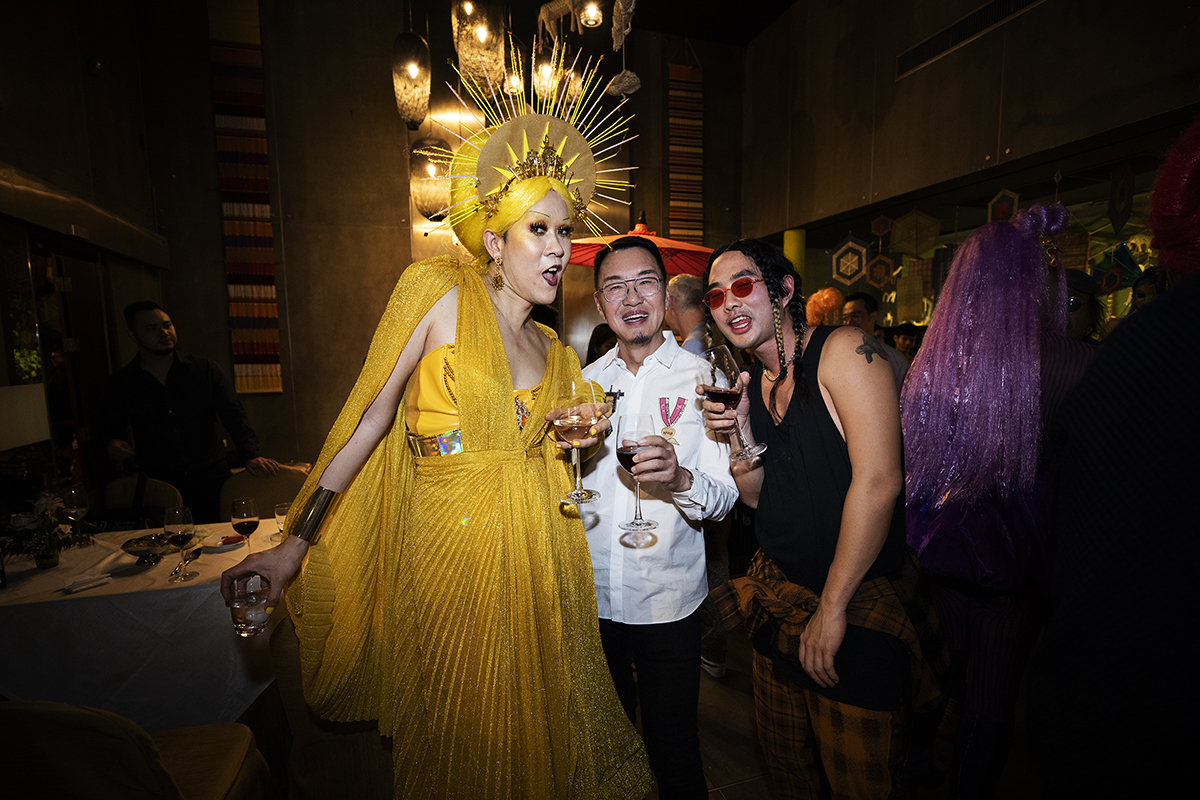
Artist Ming Wong, Patrick Sun and artist Korakrit Arunanondchai at the “Spectrosynthesis II” opening party, Bangkok, 2019
When we saw Visitors, a beautiful painting that was to be auctioned in London, we asked for a private viewing and got to meet a Sotheby’s expert, Ishrat, who is passionate about Khakhar’s work. The painting shows the artist lying on his deathbed, revisited by spirits of past friends and lovers. Ishrat shared how Bhupen didn’t paint any explicit scenes concerning his sexuality until his mother passed away. She got emotional as she related the story and it also brought tears to my eyes, because it dawned on me that the year my mother died was the year I started Sunpride. Ishrat and I cried on each other’s shoulders and did the utmost to help us procure the work, concluding the purchase just hours before it was supposed to go under the hammer.
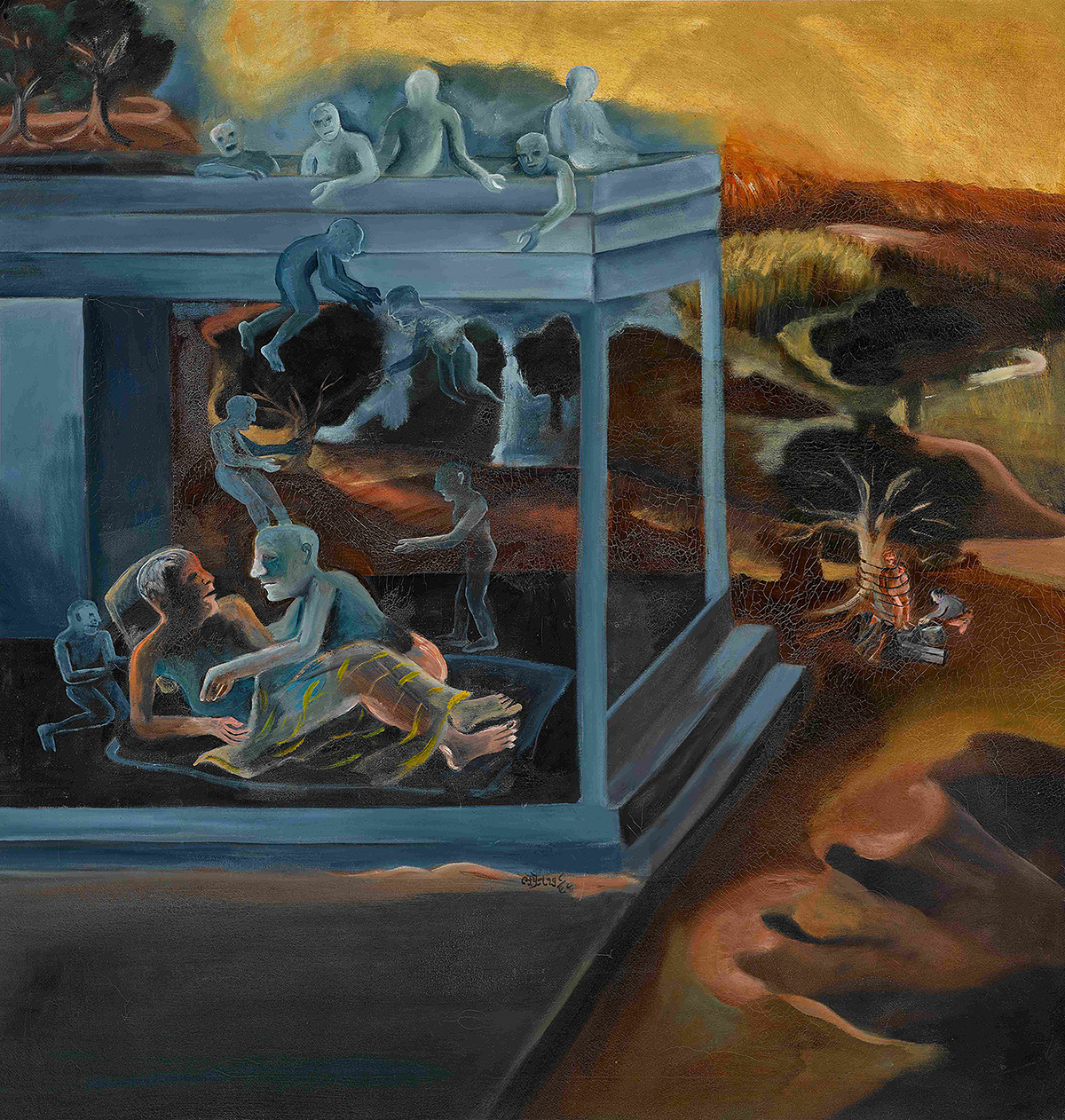
Visitors, 1998, by Bhupen Khakhar
LUX: Do you only collect works by LGBTQ artists?
PS: As illustrated by the Yue Minjun work, the answer is no. We also collect works by straight artists that explore a queer theme. It is important to have such representation, so that nobody needs to be labelled or “outed” through their participation in our collection or exhibitions.
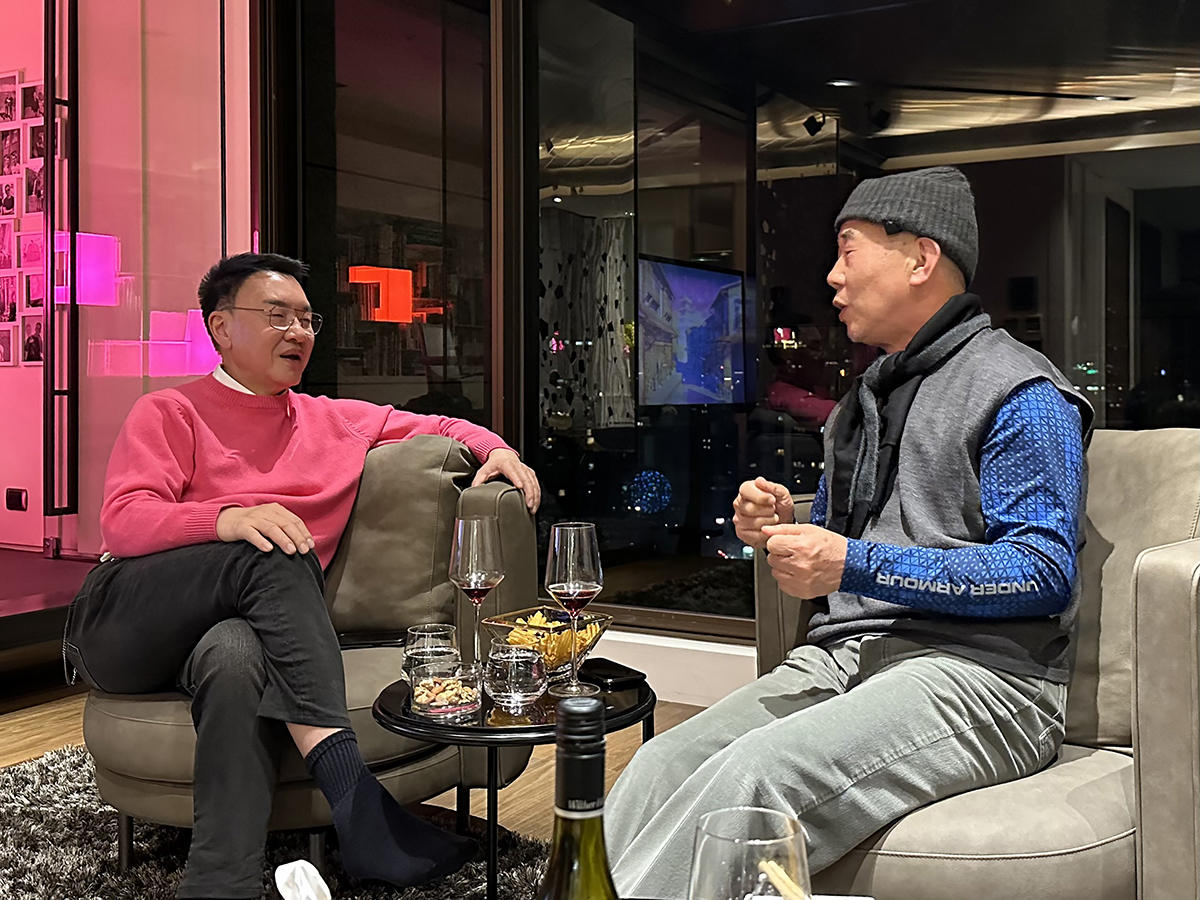
Patrick Sun with collector Rudy Tseng
LUX: Is real progress being made on LGBTQ affairs in Asia?
PS: Progress often comes in ebbs and flows. On the whole, I see more progress than regress towards the queer community. Take Hong Kong as an example: on issues such as spousal visas, taxation and housing benefits, there has been some advancement in the right direction. Just in February 2023, transgender people scored a victory in gender status on identification documents. I remain optimistic things will change for the better.
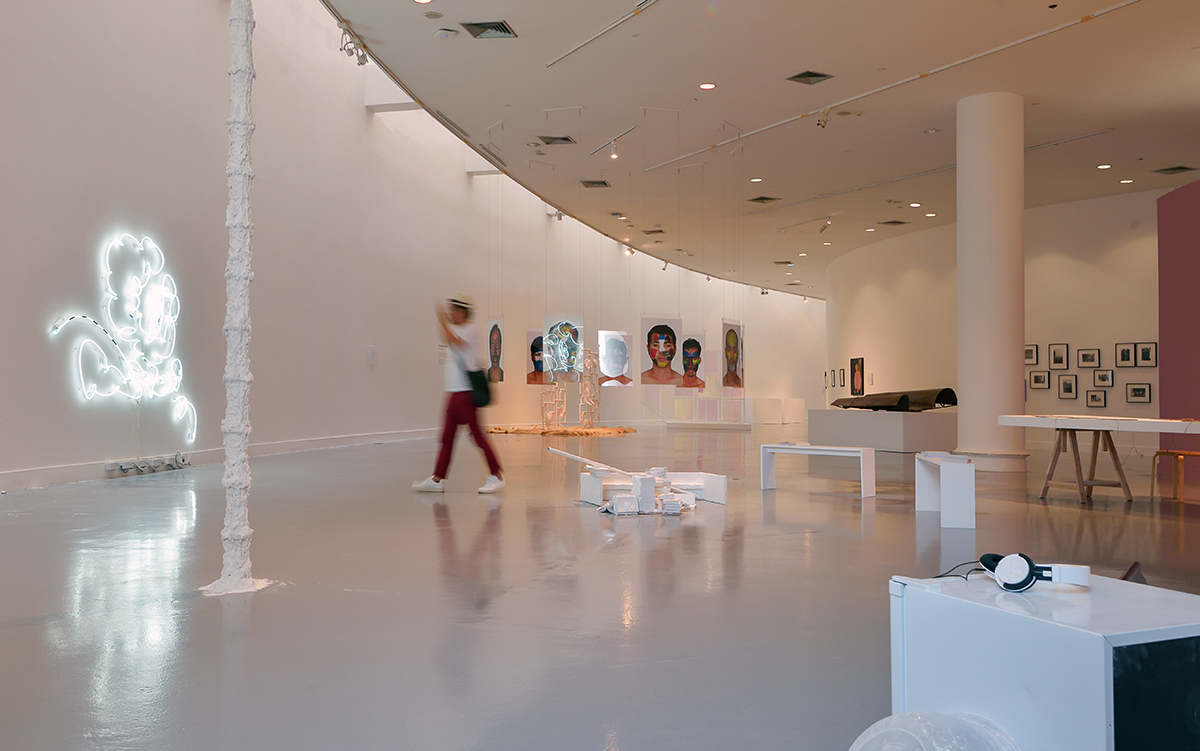
Installation at “Spectrosynthesis II”, Bangkok Art and Culture Centre 7/F, BACC, 2019
LUX: Do artists of all types have more freedom and creativity than a few years back?
PS: I am not in a position to answer for all artists, but for queer artists in Hong Kong I believe the answer is affirmative. In recent years, we have had more LGBTQ themed exhibitions, both in public and private spaces. We have also seen more presentation of such works in art fairs and galleries.
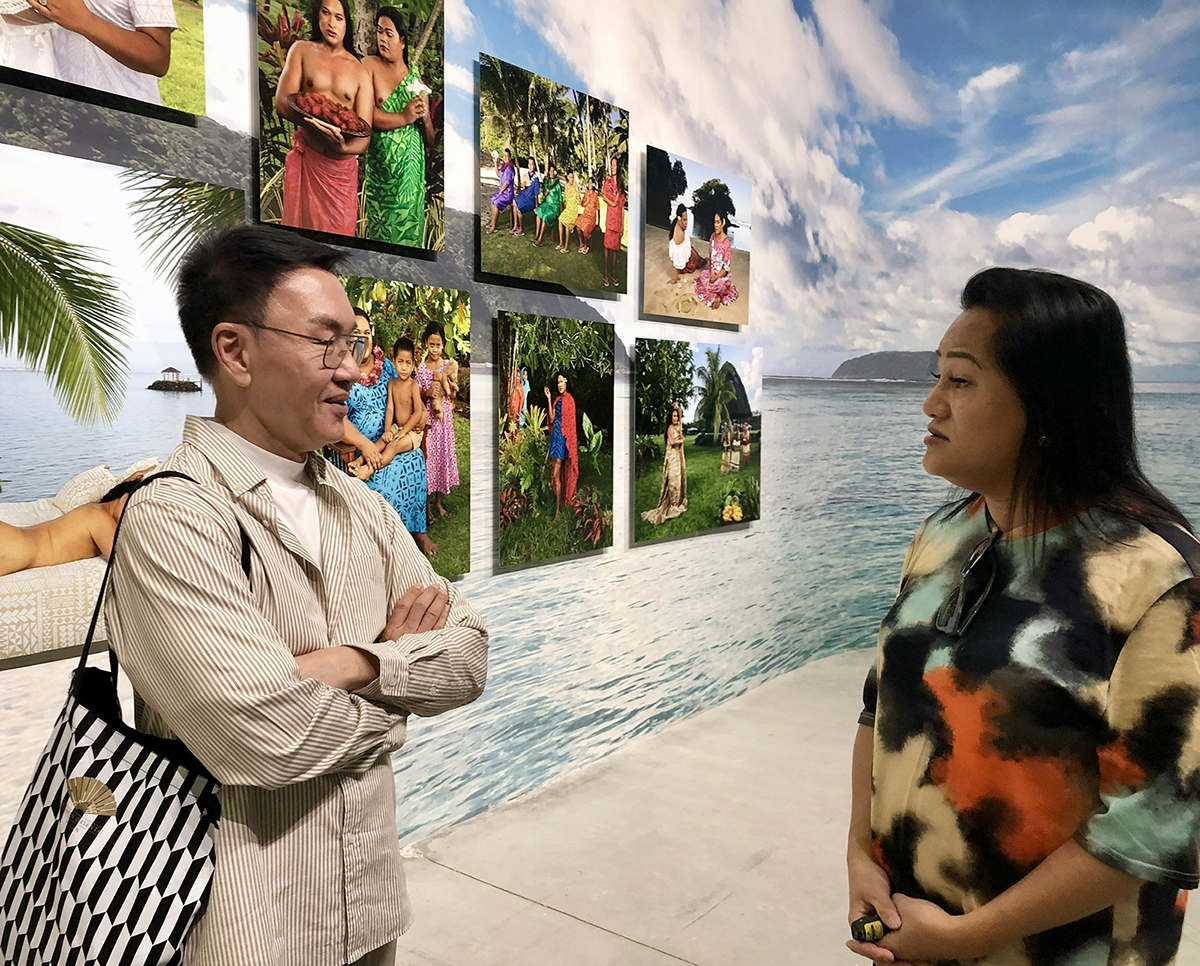
Sun with artist Yuki Kihara at Kihara’s installation, Paradise Camp, New Zealand Pavillion, 59th Venice Biennale, 2022
LUX: What are the most exciting places in Asia for art?
PS: I think Hong Kong and Tokyo are two very exciting cities to focus on. Art Basel returned to Hong Kong in full force in March 2023, and the excitement was palpable and invigorating. I also have very good feelings about Tokyo when it comes to queer art: the sentiments are ripening for a more diverse and inclusive society, and a new art fair will take place in July 2023.
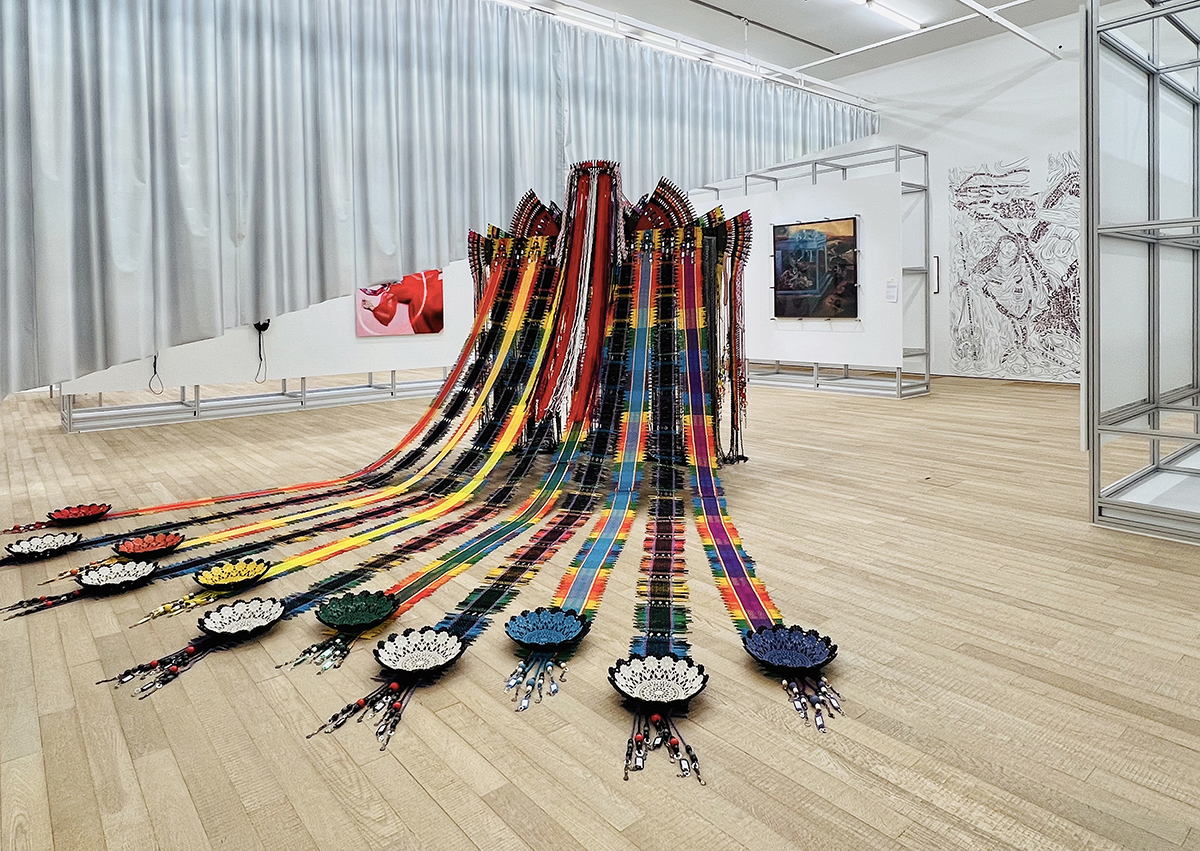
Installation view featuring Conundrum Ka Sorga (To Heaven), 2019, by Anne Samat, at “Myth Makers – Spectrosynthesis III”, JC Contemporary, Tai Kwun, Hong Kong, 2022
LUX: Singapore is getting a creative glow, but will it catch up with Hong Kong for art?
PS: I have never felt there is a need to pitch one city against the other. If there is competition I believe it would be a healthy one. The market in Asia is certainly big enough to accommodate two or more art hubs.
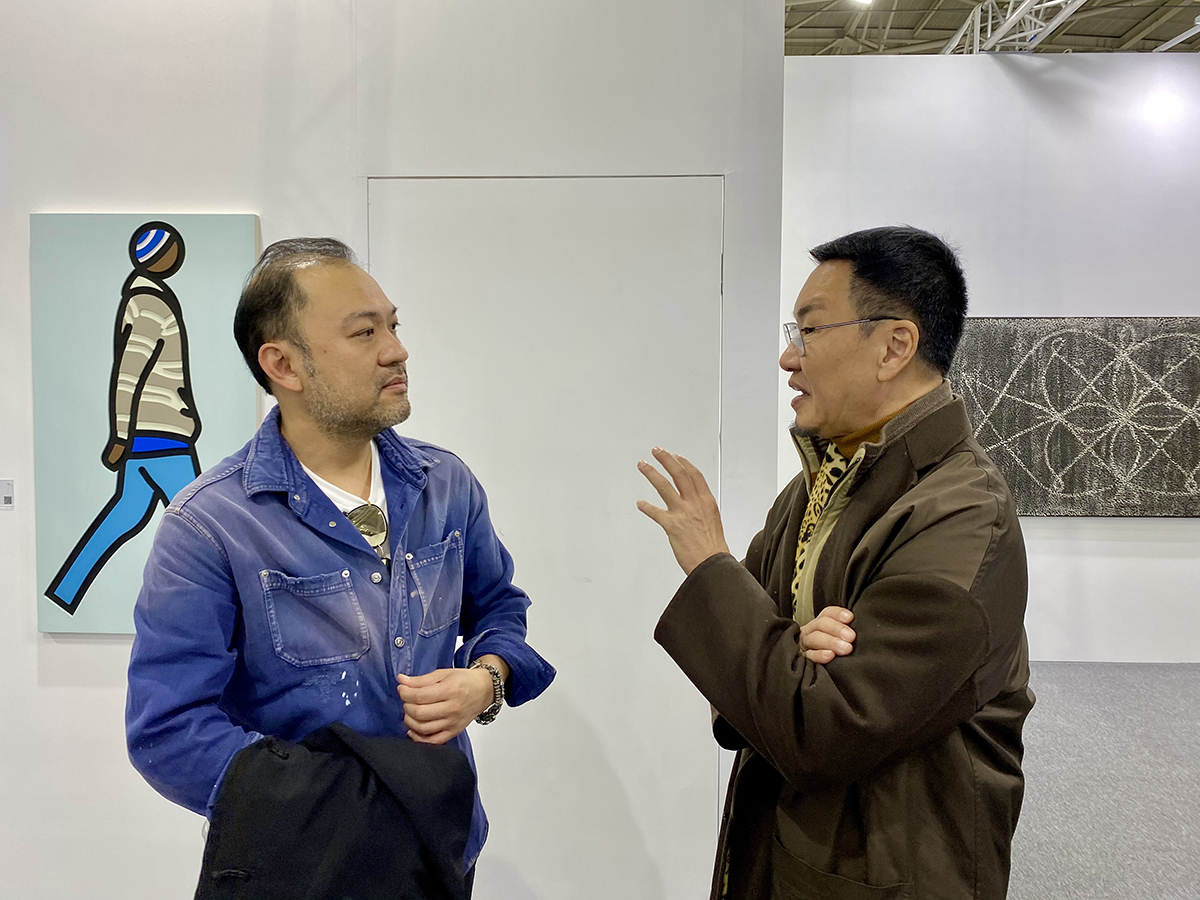
Patrick Sun with collector Disaphol Chansiri
LUX: Are you pessimistic or optimistic about the future of creativity in Asia?
PS: I am by nature an optimist, and I believe that a positive attitude helps attract the right energy, especially creative energy.
LUX: What are the most interesting advances in digital art?
PS: Interactive installations and generative creations are two developments I find most interesting. Both use technology to reach beyond capabilities of the human mind.
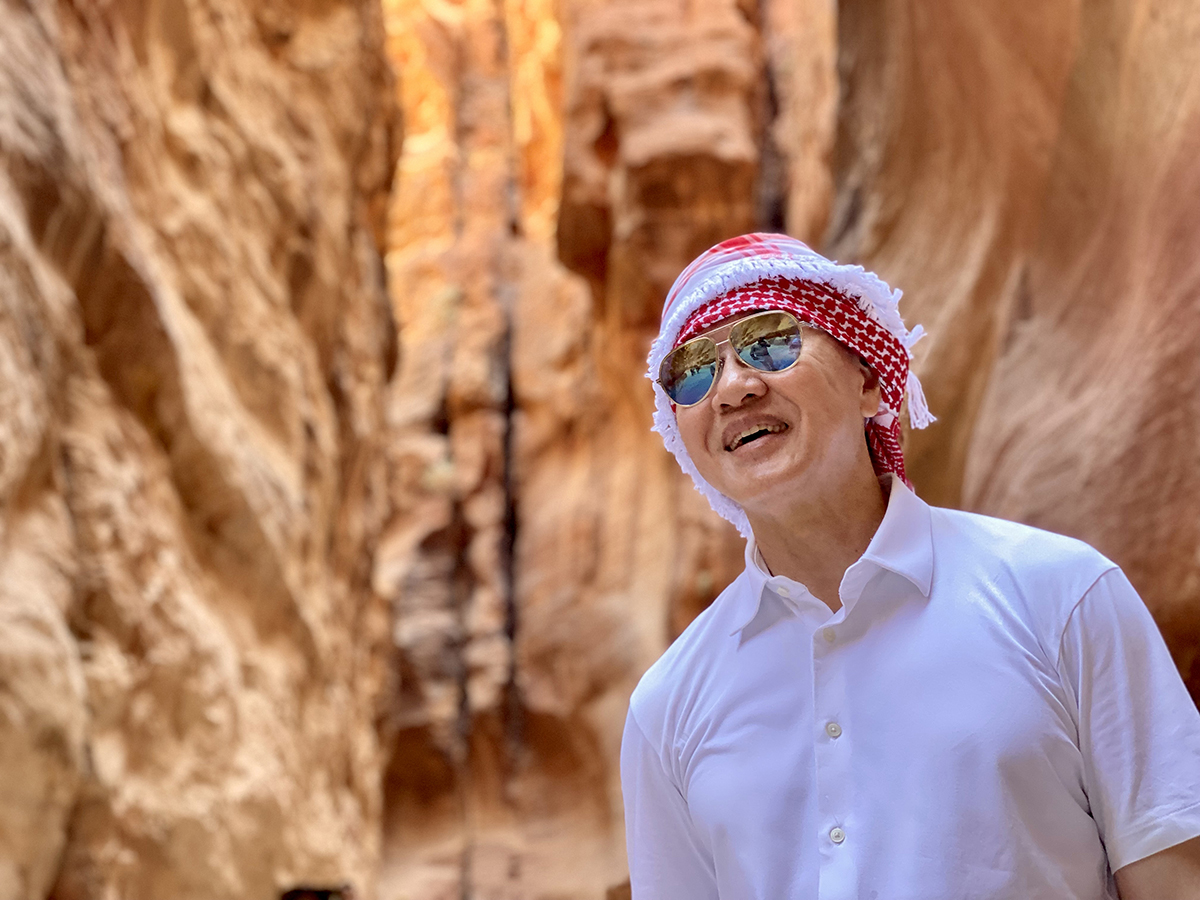
Patrick Sun
LUX: Will AI kill art?
PS: I see AI as a way for humans to explore new horizons and perspectives. It is a collaboration between human and machines rather than a rivalry. I believe AI can enhance our artistic culture and diversity instead of diminishing it.
LUX: How have events in the past couple of years affected your mission?
PS: Our mission remains unchanged since the foundation’s establishment in 2014, but Covid has inevitably affected some plans. Our most recent exhibition, “Myth makers – Spectrosynthesis III”, at Tai Kwun, Hong Kong, was meant to be held concurrently with Gay Games in Hong Kong, originally planned for 2022. We were aiming for synergy between arts and sports to enhance acceptance for the LGBTQ community.
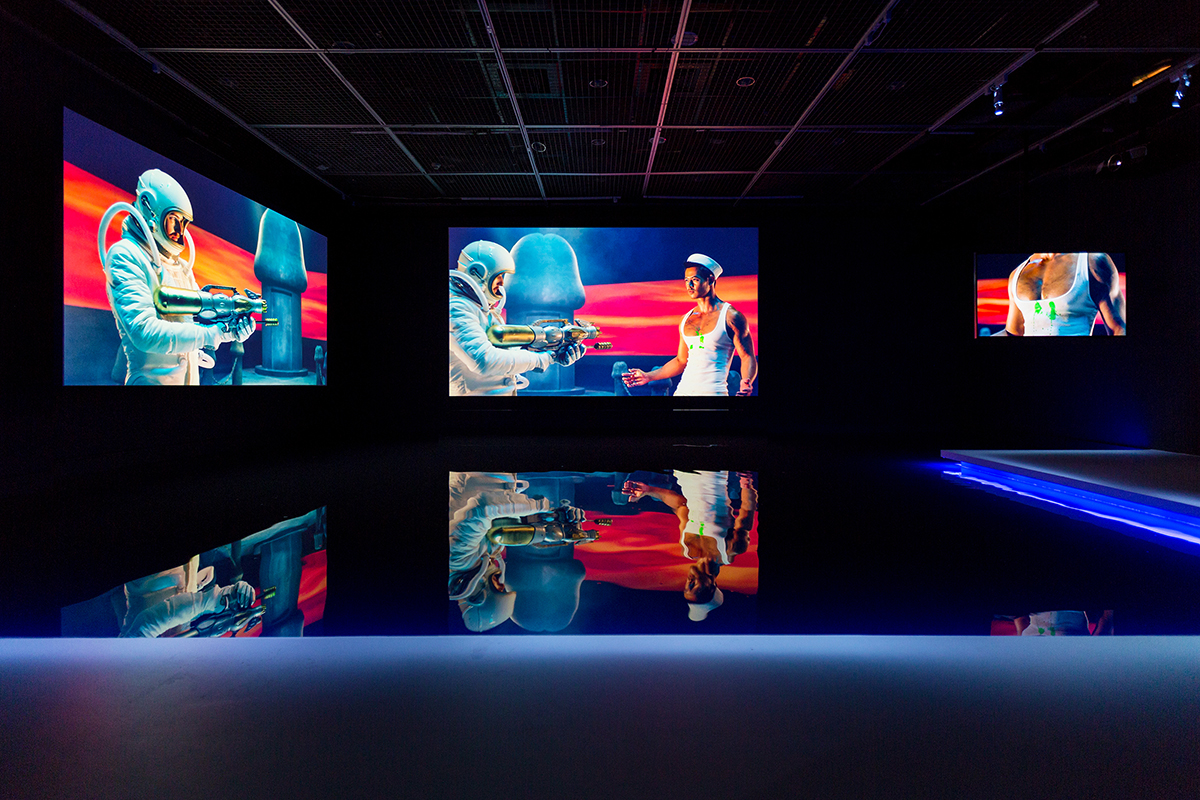
Passion, 2017, by Jun-Jieh Wang, at “Spectrosynthesis”, MOCA Taipei, 2017
Gay Games postponed its event due to the pandemic, but we decided to stay put. With Covid-related curbs, it was also difficult for our curatorial team to reach out to overseas artists to commission works and to get them to fly here for installations.
Read more: Art Dubai opens in support of South Asian artists
However, staging the exhibition in Hong Kong, where our curators and myself are based, helped to minimise the impact of this issue. There was actually a sliver lining, because we benefitted in having a broader local representation; more than one-third of the artworks presented in “Myth Makers” were created by artists based in Hong Kong.
Find out more: sunpride.hk
This article was first published in the Spring/Summer 2023 issue of LUX








